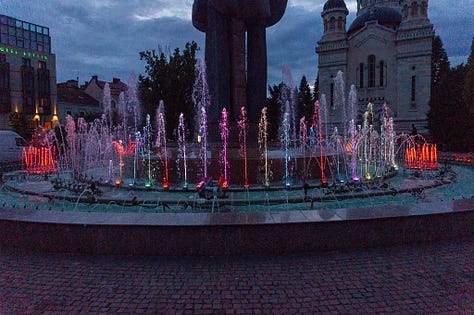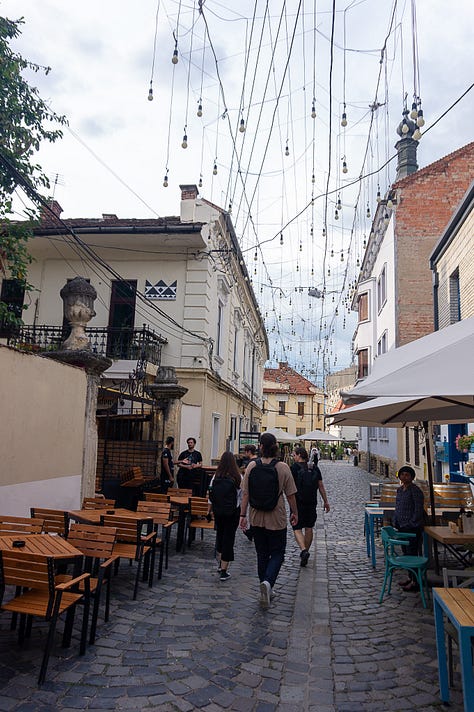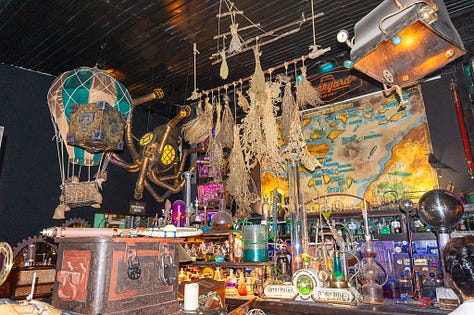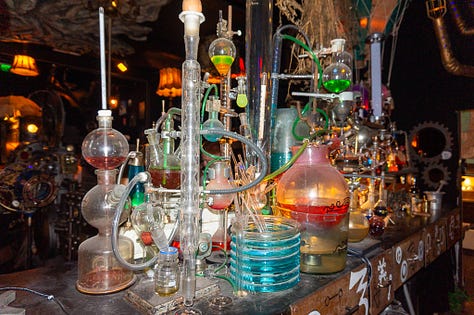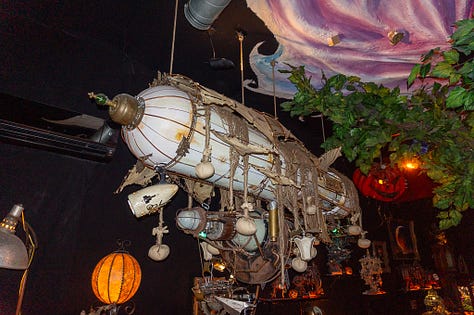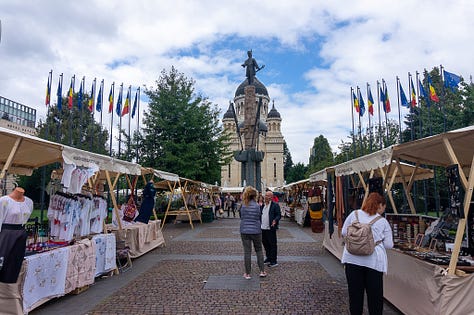6th August, Cluj
Cluj is lovely. We’ve been here a few days, based in the old town. Obviously as tourists we’re only dabbling our toes, but from what we’ve seen everyone is pretty chilled out.

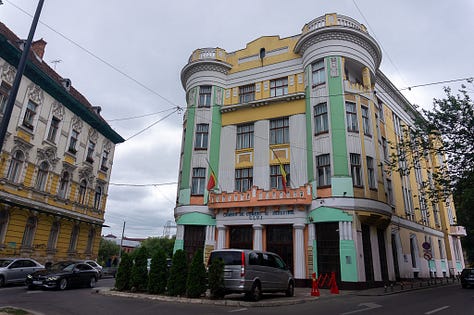
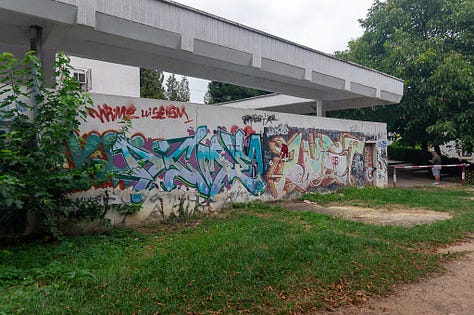
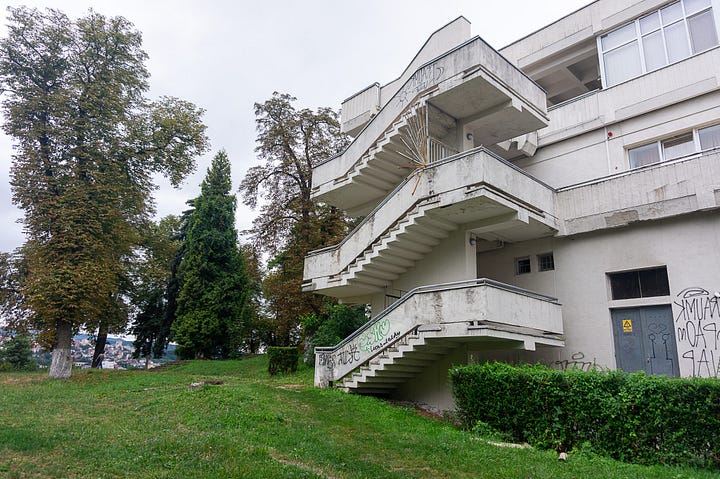
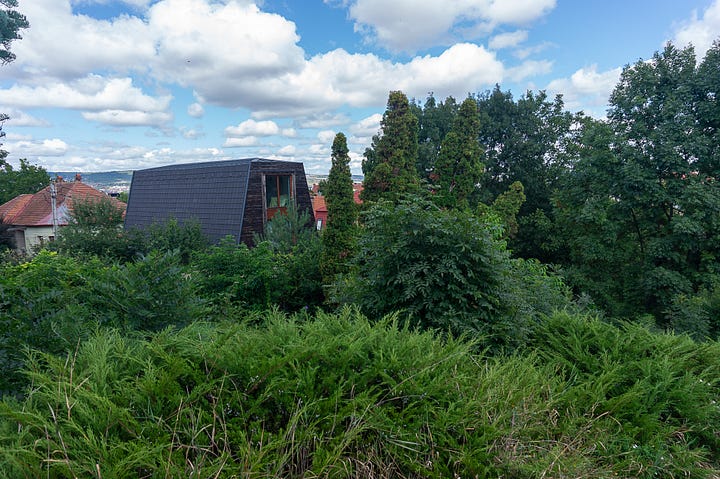
Our second day here, we bumped into a big group of lads, all dressed in black, jogging through the streets chanting. Given what’s going on in the Uk at the moment, we were a bit cautious, but one local guy explained it was a local football derby, and there is no need to worry - he’s seen what is going on in the UK…’nothing like that here, this is a safe town, you are welcome here”
A few thousand fans gather in the central old town square, they’re all in black, mostly guys, but a fair few young women too, and quite a few kids. We hang around, listen to some of the chants and take pics. . It’s next to a huge church, which has religious orthodox service playing through external speakers, into the square, with the priests sermon and a choir singing. Other than the football fans, lots of other people are sat outside cafés, eating and drinking, it’s super chilled and difficult to picture this collage of social dynamics in the UK. It’s quite a surreal mix. There’s the occasional flare being let off, sending plumes of smoke into the air, some huge drums and a couple of massive flags being waved. There’s also a massive fold out banner being made, spray painted, laid out on the floor in the square
One of the giant flags has an image of the grim reaper, with “Gravediggers “ in Romanian. The team is Cluj University. The guy with the flag comes up and asks if I can send him the pics on Instagram, he couldn’t have been sweeter about it, and of course I’m happy to oblige. He and his mate chat a bit, he points to the flag “ we are death “ and smiles, blowing us a kiss and waving as they walk away, wishing us. A nice trip. Most of them have “Ultra” T-shirts, there’s lots of chanting and drum beating before the march to the match, and especially in relation to the Uk, if we were home right now, I’d be nervous, but not once is anyone even vaguely intimidating, and the people we approach are all happy to talk about the team, a friendlier bunch we couldn’t have hoped to meet. Some time after 7, under a visible, but low key police escort, they march to the ground. They go down a goal in the first half, but come back to win 3-2.

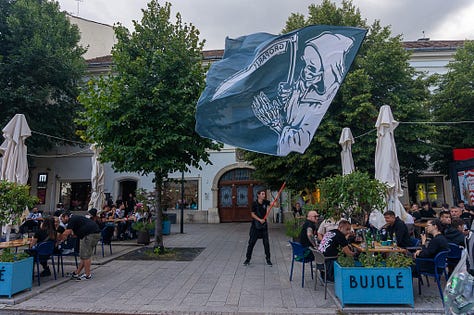
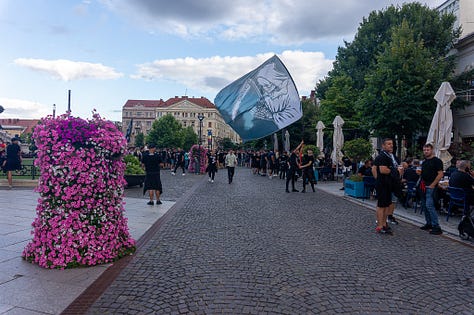
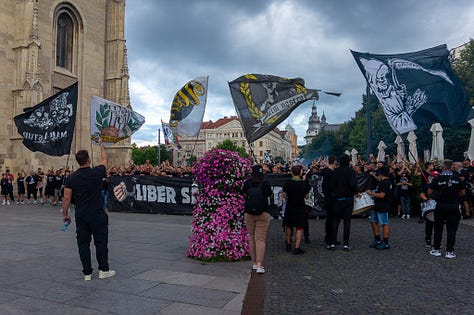
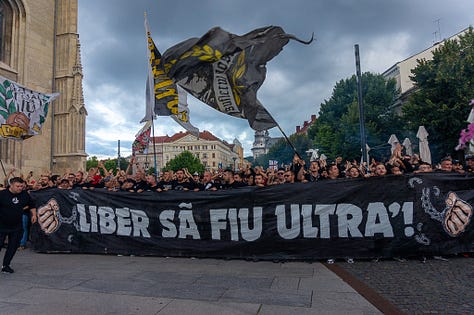
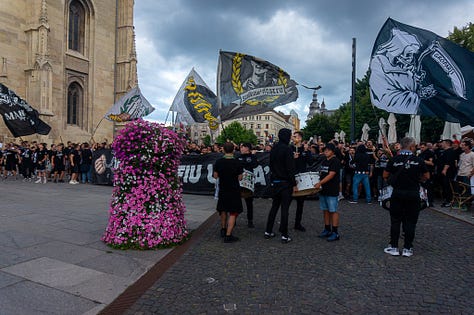

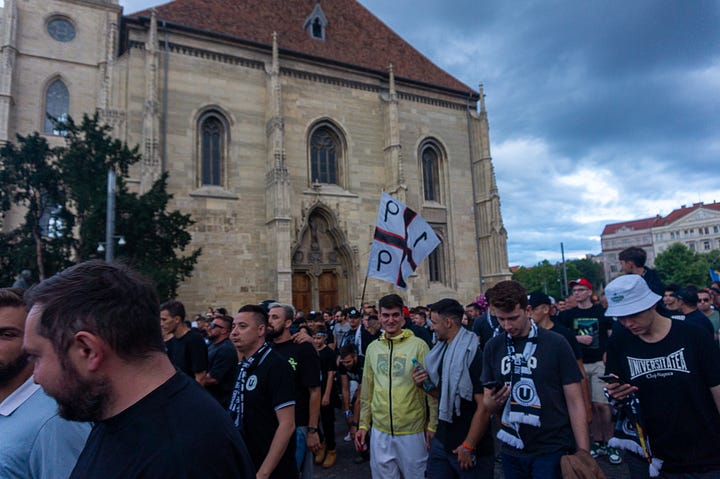
Later in the evening walking a bit away from the old town and bump into a group of young guys from Bangladesh, they’re here working for 6 months, before going back home. They say they don’t especially like their jobs, but the town is nice and people treat them well. They all have family in Bangladesh, who are involved in the anti government corruption demonstrations there, and they’re worried about them.
The next day before we leave, I find a record shop down a dusty little alleyway. It’s called Dusty’s records. Again there’s a lot of second hand Brit/US rock etc, but also big sections of East European folk, I buy a few, including a Romica Puceanu album, on of the most prominent Roma artists in the Ceausecu era. It’s new and about the same price as a new vinyl in the UK. There’s also some second hand Hungarian ones, including a Sandor Lakatos album.
The guy running it is quite chatty, the old folk albums he almost gives me, they’re so cheap. He’s surprised, but also sounds quite impressed that we’ve traveled from the UK by train. There seems to be a lot of Italian and German tourists around here, but not many from the UK. The shop is down a narrow alley, hidden away with building work. He says it’s quiet, but he’s hopping it will be busy next week when there’s a big music festival in town. I hope he stays in business, it’s a real gem!
There’s a good Jewish history museum here which traces the lives of three local people from the same family, who survived the Holocaust. Starting at the begging of the 20th century, the stories are told in they own words, via transcriptions, which have been recorded years later and can be played to listen to as you walk around. The museum is run by their surviving family. Sadly, as with much of Europe the majority of the local Jewish population were murdered during the period, with very few surviving. Before the way there had been a population of just under 20’000. Over 16000 were confined to ghettos and then deported to Auschwitz in May 1944. By the 21st Century a few remain in the city.
https://yivoencyclopedia.org/article.aspx/Cluj
We also visit the Steampunk museum, which is a must see! It’s completely unique, a mix of art, intriguing history and of course Steam Punk… the people who run it and work there are enthusiastic and friendly, highly recommended, a celebration of creativity and imagination for all.

